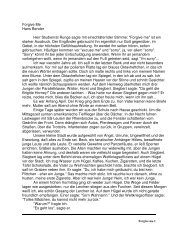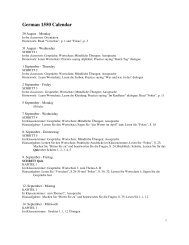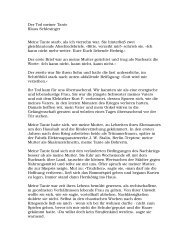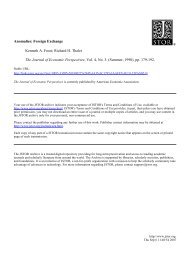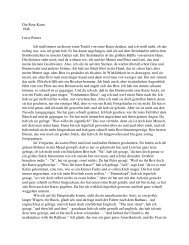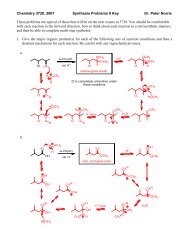Basic Principles of Polymer Chemistry - the Arts and Sciences page ...
Basic Principles of Polymer Chemistry - the Arts and Sciences page ...
Basic Principles of Polymer Chemistry - the Arts and Sciences page ...
Create successful ePaper yourself
Turn your PDF publications into a flip-book with our unique Google optimized e-Paper software.
II Definitions <strong>of</strong> Common <strong>Polymer</strong> Terms<br />
A) Molecular Size/Weight<br />
<strong>Chemistry</strong> 5861 - <strong>Polymer</strong> <strong>Chemistry</strong> 5<br />
1) Monomer ⇒ Oligomer ⇒ High Oligomer/Low MW <strong>Polymer</strong> ⇒ <strong>Polymer</strong><br />
B) <strong>Polymer</strong> Structure<br />
1)<br />
2)<br />
3)<br />
Repeating Unit<br />
a)<br />
b)<br />
a)<br />
b)<br />
Conventional Repeating unit depends on monomer used in syn<strong>the</strong>sis, e.g.<br />
i)<br />
ii)<br />
Polyethylene from Ethylene<br />
Polymethylene from Diazomethane<br />
The Base Unit is independent to syn<strong>the</strong>tic route <strong>and</strong> is smallest possible Repeating<br />
Unit<br />
End Groups<br />
Living <strong>Polymer</strong>s<br />
Telechelic <strong>Polymer</strong>s (reactive end groups)<br />
Reactive Oligomers<br />
C) Average Degree <strong>of</strong> <strong>Polymer</strong>ization = DP bar<br />
1)<br />
2)<br />
3)<br />
4)<br />
DP = Number <strong>of</strong> repeating units in chain (plus <strong>the</strong> number <strong>of</strong> end groups)<br />
DP bar = <strong>the</strong> Average number <strong>of</strong> repeating units in sample<br />
MW = DP x (Repeating Unit MW)<br />
CH3-(CH2)100-CH3 has a DP = 102<br />
©2002, Dr. Allen D. Hunter, Youngstown State University Department <strong>of</strong> <strong>Chemistry</strong>




